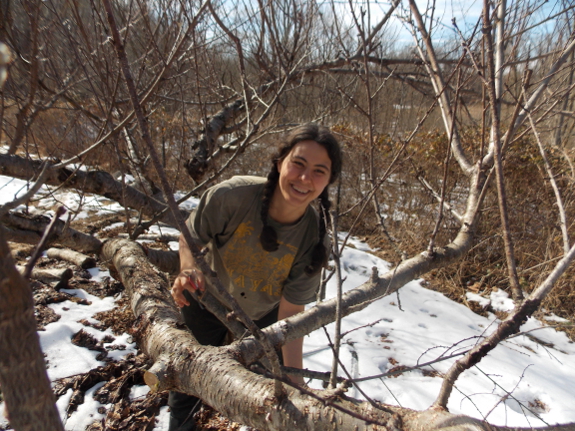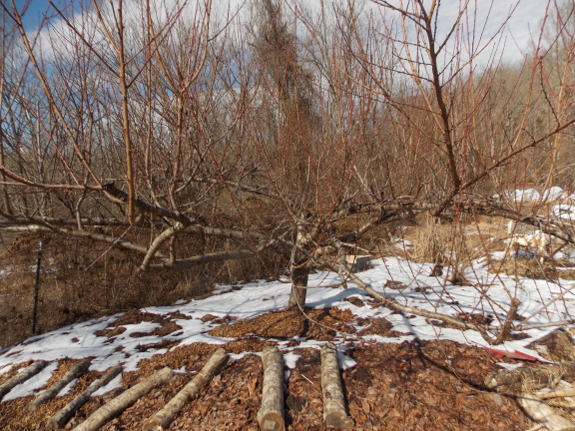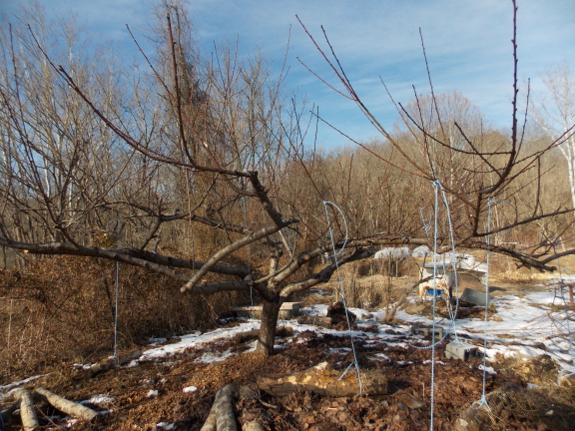
How to rejuvenate a peach tree with pruning

I can still hear our
kitchen peach complaining: "I asked the hairdresser to trim off my split
ends and I walked out of there with a bob!" (Yes, my peach tree
does use vocabulary from the 1920s --- she's that kind of a tree.)
More seriously, our
seven-year-old peach needed a lot of pruning this year for a variety of
reasons. I've always read about winter damage on fruit trees, but
had never seen it until this year --- I guess a low of -14 Fahrenheit is
enough to nip a significant number of twigs. Interestingly, the
winter-killed twigs were mostly those that were in bad positions anyway,
hidden under other branches. Removing the winter-killed twigs
opened up the tree more than I was used to right away, but there was no
getting around that part of the pruning campaign.

The bigger reason the
tree looks so shorn (before photo above and after photo below) is that I
wanted to lift some of the main branches up out of the fungal zone and
to give them an upward, rather than a downward, slant. My original
goal when I trained the tree was for the scaffold branches to rise at a
slight angle away from the trunk, but heavy fruit harvests have pulled
many of those branches down to horizontal or lower. Branches at or
below horizontal promote the formation of watersprouts, and also need
to be propped up during fruiting, so it seemed worthwhile to do some serious pruning now for the long-term health of the tree.

After cutting out
troublesome branches, I replaced the missing scaffolds by bending down
smaller branches to fill in the gaps. As you can see, there are
still a few horizontal scaffolds, but I didn't want to do too much too
quickly. Next year, I can take another stab at rejuvenating the
framework of the tree.
Even though this peach looks very bare in the photo above, there are
still lots of fruiting buds to go around. Barring a late frost, I
suspect we'll see a good harvest despite my heavy hand. The more
likely issue is that watersprouts may come out in spades this summer
since the tree will have more energy than it needs to put into the
remaining branches. I'll just have to stay on top of the summer pruning and hope for the best.
Want more in-depth information? Browse through our books.
Or explore more posts by date or by subject.
About us: Anna Hess and Mark Hamilton spent over a decade living self-sufficiently in the mountains of Virginia before moving north to start over from scratch in the foothills of Ohio. They've experimented with permaculture, no-till gardening, trailersteading, home-based microbusinesses and much more, writing about their adventures in both blogs and books.
Want to be notified when new comments are posted on this page? Click on the RSS button after you add a comment to subscribe to the comment feed, or simply check the box beside "email replies to me" while writing your comment.
